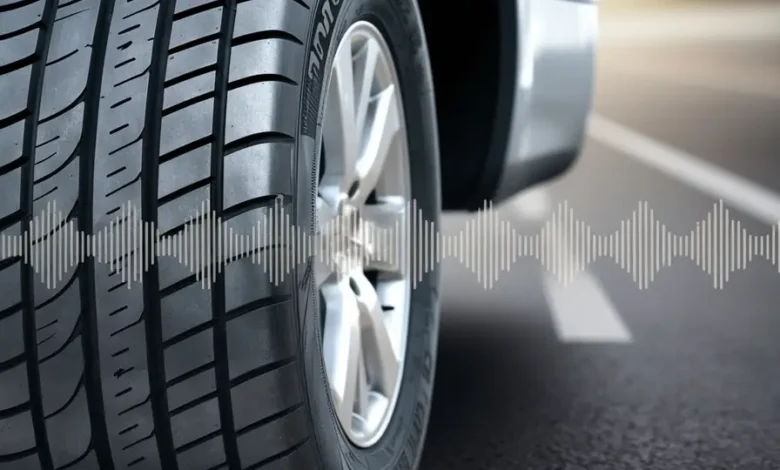
Driving should be a smooth and quiet experience, but when your car starts to make unusual sounds, it can be alarming. One particular concern for many drivers is how to stop womp womp sounds coming from the tires. These rhythmic, repetitive noises often signal an underlying issue that demands immediate attention. Ignoring these sounds may lead to serious problems, such as increased tire wear, poor handling, or even dangerous blowouts.
Addressing tire-related problems early not only prolongs the life of your tires but also ensures a safer driving experience. This blog aims to help you understand the common causes behind womp womp tire noises and provide practical solutions to fix the issue. By the end, you’ll know how to diagnose the problem and keep your tires in optimal condition.
Ignoring these noises may lead to serious damage, including increased tire wear, poor handling, or even dangerous blowouts. Addressing tire-related problems early not only extends the life of your tires but also ensures a safer driving experience.
This blog aims to help you understand the common causes behind womp womp tire noises and provide practical solutions to fix the problem. By the end, you’ll have a clear understanding of how to diagnose the issue and keep your tires in top condition.
What Causes Womp Womp Tire Noise?
Tire Inflation Issues
Tire inflation plays a crucial role in how your vehicle performs and sounds. Both under-inflation and over-inflation can lead to uneven wear, increased friction, and the dreaded womp womp tire noise. When tires are under-inflated, the edges wear out faster due to more surface contact with the road. This not only increases friction but also generates heat, raising the risk of tire blowouts. Over-inflation, on the other hand, causes the center of the tire to wear down more quickly, creating an uneven balance.
Under or over-inflated tires can cause uneven wear and lead to the womp womp noise while driving—check tire pressure regularly.
The increased friction from under-inflated tires can also damage the tire structure, leading to separation or complete failure. Ensuring your tires are inflated to the recommended pressure helps to avoid these issues and prolongs tire life. Regularly checking tire pressure, especially before long trips, is an easy yet essential step to avoid these problems.
Tire-Belt Separation
A faulty or separated tire belt can cause more than just a womp womp sound — it often results in noticeable vibrations as well. Tire belts are vital for maintaining structural integrity, and when they begin to fail, it creates irregular movement, leading to noise. Drivers may feel the car shake or notice the steering wheel vibrating if a belt separation occurs.
Driving on tires with separated belts is risky. These tires can become unstable at any moment, especially at higher speeds, increasing the chances of a blowout or even a rollover. It’s essential to replace tires as soon as belt separation is suspected to ensure safety on the road. Aged or visibly damaged tires should never be ignored, as replacing them promptly can prevent major accidents.
Wheel Alignment Problems
Improper wheel alignment is another common cause of womp womp tire noise. When the wheels are not properly aligned, the tires do not make even contact with the road, leading to uneven wear. This uneven wear can create irregular patterns on the tires, which results in unwanted noise while driving. Additionally, misaligned wheels increase the strain on your car’s suspension system, further reducing the vehicle’s overall handling and safety.
Driving with poor alignment not only shortens the lifespan of your tires but also makes it harder to maintain control of your vehicle, particularly at higher speeds. Regular alignment checks are crucial to avoid long-term damage to your tires and suspension components. By ensuring your wheels are correctly aligned, you can prevent unnecessary tire noise and improve your vehicle’s performance.
Rough or Worn Tire Treads
Worn tire treads can also contribute to womp womp noises while driving. As tire treads wear down over time, they create fluctuating friction between the tires and the road, generating vibrations and noise. Unevenly worn tires can be especially noisy, as the changing surface area in contact with the road results in irregular sounds.
Worn-out tire treads create fluctuating friction with the road, resulting in increased noise and reduced safety.
Different tread patterns have varying effects on noise levels. Some tires are designed with quieter patterns, while others, particularly off-road or aggressive treads, can produce more noise. If your tires are worn out or the noise becomes excessive, it’s best to replace them with new ones. Opting for tires designed to minimize noise can also improve your driving experience and enhance overall safety on the road.
How to Address Womp Womp Tire Noise
Proper Tire Inflation
Maintaining the correct tire pressure is one of the easiest and most effective ways to prevent womp womp tire noise. Properly inflated tires ensure even wear, reduce friction, and improve overall vehicle performance. To keep your tires in optimal condition, check tire pressure at least once a month, and always before embarking on long trips. Temperature fluctuations, especially in extreme weather conditions, can affect tire pressure, so be sure to adjust accordingly in hot summers or cold winters.

By keeping your tires properly inflated, you not only avoid annoying noises but also increase fuel efficiency and extend the lifespan of your tires.
Replace Tires When Necessary
Knowing when to replace your tires is key to preventing unwanted tire noise and maintaining safety. You should regularly inspect your tire treads for signs of wear, such as balding areas, cracks, or uneven tread patterns. Tires with belt separation will also need immediate replacement, as continuing to drive on them could lead to dangerous blowouts.
When it’s time to replace your tires, it’s worth investing in high-quality brands known for their durability and low noise levels. Brands like Michelin, Bridgestone, and Goodyear offer tires specifically designed to minimize road noise, which can make a significant difference in your driving experience.
Fix Wheel Alignment Issues
If you suspect that your wheel alignment is off, it’s best to seek professional help. A proper alignment ensures that your tires wear evenly and that your car handles smoothly. Common signs of alignment issues include vibrations in the steering wheel, your car pulling to one side, or uneven tire wear. Addressing these issues early can help prevent further damage and avoid costly repairs.
While it’s possible to spot alignment problems on your own, getting a professional alignment service at least once a year or whenever you notice issues is crucial for ensuring your vehicle stays safe and noise-free on the road.

Frequently Asked Questions (FAQs)
What does womp womp tire noise indicate?
The womp womp noise typically points to several issues related to tires or wheels. Common causes include improper tire inflation, tire-belt separation, misaligned wheels, or worn tire treads. Ignoring this noise can lead to bigger problems like poor vehicle handling, increased tire wear, or even tire blowouts, putting your safety at risk.
How much does it cost to fix womp womp tire noise?
The cost depends on the underlying issue:
-
- Tire replacement: Costs can range from $100 to $300 per tire, depending on the brand and model.
- Wheel alignment: A standard alignment service generally costs between $65 and $100.
- Other repairs: Additional issues like tire balancing or suspension repairs may cost extra, ranging from $20 to $200 based on the complexity.
Can I drive with unbalanced or misaligned tires?
It’s not recommended. Driving with unbalanced or misaligned tires can cause uneven wear, making the noise worse over time. It can also lead to poor handling and increased fuel consumption, and in some cases, it may damage suspension components, leading to more expensive repairs.
How can I tell if the noise is from tire problems or wheel bearings?
One way to differentiate is by performing a steering test. If you hear the noise when turning the steering wheel or if it gets louder when you steer in a specific direction, it might indicate wheel bearing issues. In contrast, tire-related noises are usually consistent and linked to road friction.
How often should I check my tire pressure?
You should check your tire pressure at least once a month and before long trips. Extreme weather conditions can affect pressure, so it’s essential to monitor regularly, especially during seasonal changes.
What happens if I don’t replace worn tire treads?
Worn tire treads reduce traction, especially in wet or icy conditions, increasing the risk of accidents. Additionally, worn tires are prone to more road noise and may contribute to the womp womp sound.
How do I know when my tires need replacement?
You can check the tread depth using a penny test. Insert a penny into the tread grooves; if you can see the top of Lincoln’s head, it’s time to replace your tires. Tires should also be replaced if they show signs of cracks, bulges, or uneven wear.
Can low-quality tires cause more noise?
Yes, low-quality or poorly manufactured tires often have less effective noise-dampening tread patterns. Investing in high-quality tires designed to reduce road noise can make your driving experience more comfortable and safer.
How long do wheel alignments typically last?
A good wheel alignment should last at least one year. However, if you drive on rough roads or hit potholes frequently, you may need to get your alignment checked more often to prevent premature tire wear and other related issues.
Conclusion
In summary, womp womp tire noise is often caused by issues like improper tire inflation, tire-belt separation, misaligned wheels, or worn tire treads. These problems not only lead to unpleasant noise but also impact your vehicle’s performance, safety, and longevity. The good news is that with proper care—such as maintaining correct tire pressure, timely tire replacements, and regular wheel alignments—you can easily prevent or fix this issue.
Regular tire maintenance, from pressure checks to alignment fixes, ensures a safer, quieter, and smoother driving experience.
Regular tire maintenance and inspections are crucial to ensuring a smooth, safe driving experience. By staying proactive and addressing these issues early, you can avoid costly repairs and enjoy a quieter, safer ride.
Thank you for following this guide! For more tips and insights on tire care and vehicle maintenance, be sure to check out our upcoming articles. Safe driving!




